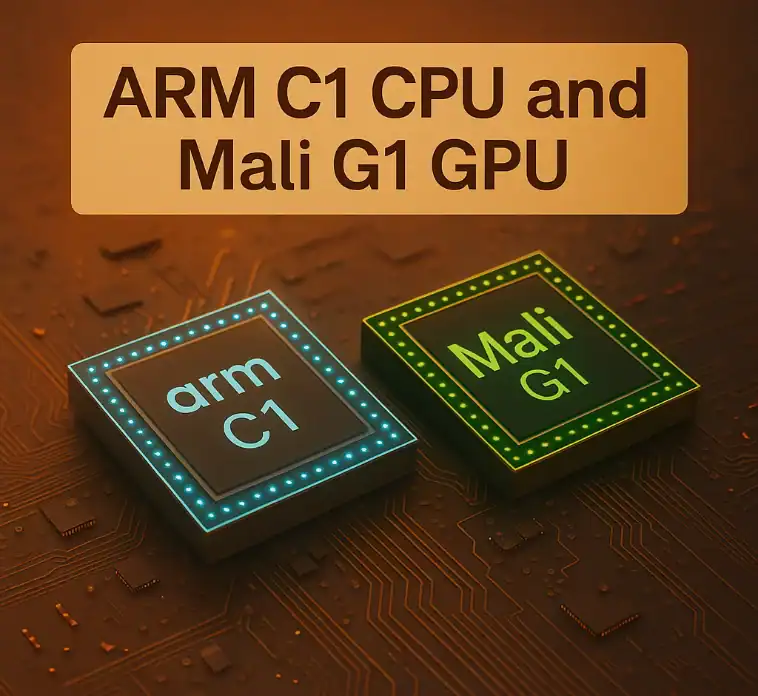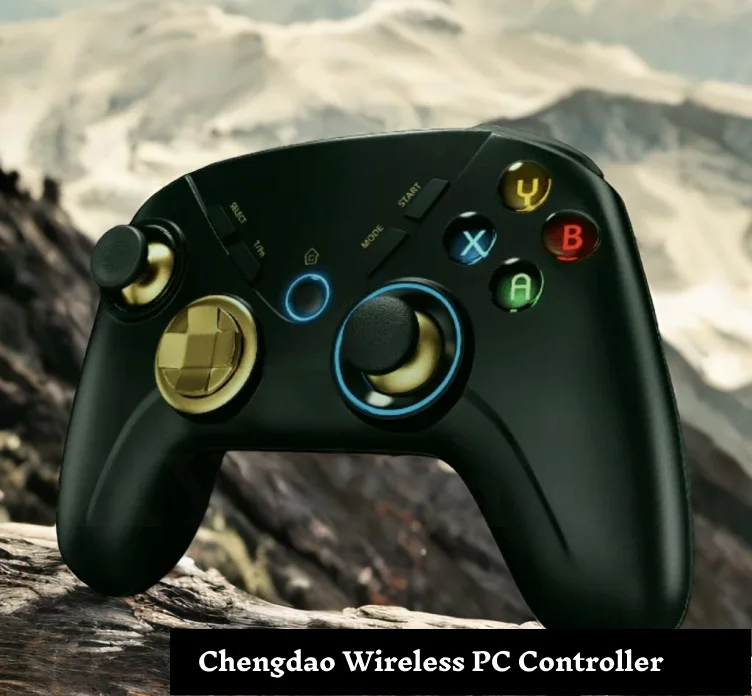ARM Holdings has announced its revolutionary next-generation processor technology that will revolutionize the smartphone market. The company detailed the upcoming C1 CPU family and Mali G1 GPU cores, designed for MediaTek’s upcoming Dimensity 9500 chipset. This release is ARM’s largest architectural revision in a while, as represented by the numbers. The new cores are said to offer a big boost in performance and, at the same time, cut power usage significantly. These breakthroughs assert ARM Holdings’ place in a highly competitive processor market. The news has certainly generated interest among investors looking at the ARM stock price.
ARM’s Strategic Shift: Moving Away From ‘ARM’ As a Brand Name
ARM Holdings has quietly made an odd move—they are abandoning the well-known processor names. The company has shifted away from the popular Cortex-X and Cortex-A naming, with some history in the market. It does so with a strategic switch of its own, for its latest processors form the new C1 family, a new stage in ARM’s CPU evolution.
The rebranding is part of ARM’s new direction for product lines and market focus, the company noted. Industry observers see this as ARM trying to introduce a bit more simplicity into its often confusing processor hierarchy. The move is also a sign of the confidence the company now has in its new improvements to the architecture.
Decoding the New C1 Family Layout
The C1 family, debuting now, offers four unique processor tiers for varying market segments. The C1-Ultra, at the very top, offers flagship-level performance for high-end products. The C1-Premium also offers equivalent performance in a small form factor to suit space-limited installations. For mid-tier smartphones in search of an optimal balance in performance and power consumption, we’ve also built the C1-Pro. Lastly, the C1-Nano is designed for low-cost energy efficiency. This layered setup allows device makers more choice with respect to their device strategies. All of the C1 chips are based on the new ARMv9.3 ISA architecture family. It’s a foundation that offers stronger security, smarter AI, and faster overall performance.
C1-Ultra: The Flagship Performance Champion
The C1-Ultra is ARM’s response to the very high-end features in a flagship smartphone. This chip, following on from the well-liked Cortex-X925, delivers large performance increases on a variety of fronts. According to ARM, this new chip provides a 12% IPC (Instructions Per Clock) improvement over its predecessor. When manufacturers move to advanced and smaller process technologies, such as the Generation 3 3nm foundry processes, these performance improvements can be up to 25%. This significant enhancement makes the C1-Ultra very appealing to high-end smartphone makers. The CPU is particularly great for demanding tasks, such as gaming, camera work, and processing AI.
Power Efficiency Breakthrough
What’s possibly even more stunning than raw performance, however, is the C1-Ultra’s power efficiency. ARM designers have managed to achieve an impressive 28% less power usage, while keeping the same performance levels. This development solves one of the biggest challenges of the smartphone industry. Reduced power consumption also increases battery life for the end customer. Device makers would also be able to push more aggressive performance profiles without having to worry about temperatures. Advanced high-efficiency technology on the C1-Ultra allows the chip to be used to make thin, light flagship phones. These improvements come from its architecture being more optimized and made through a better process. This efficiency breakthrough is made possible thanks to ARM’s relationship with the leading foundries.
C1-Pro: Balancing Performance and Efficiency
The C1-Pro succeeded the Cortex-A725 and is aimed at the high-value mid-range mobile phone market. This SoC brings two separate value propositions to the manufacturer, depending on whether it views performance or cost as the more important design partner. Vendors get the same performance as they would with A725, but 26% more power efficient. Their performance can also be increased by 11% with the same power consumption. This flexibility enables product manufacturers to tailor to their particular market position. Extended battery life lets budget-conscious customers save even more, and performance enthusiasts get an in-your-face faster response time. The C1-Pro is a well-rounded candidate for your mainstream smartphone. They are the highest volume device segment within the global smartphone market.
Mali G1 GPU: Revolution In Graphics Performance

Together with the CPUs, ARM released the details of the Mali G1 GPU architecture. This GPU is designed to work alongside the C1 CPU family, delivering an even richer graphics experience to mobile users. The Mali G1 is reportedly aimed at gaming on the go, video streaming, and augmented reality use cases. From early benchmarks, there are significant improvements in the efficiency of graphics rendering. The GPU also features dedicated AI acceleration cores for machine learning payloads. These features will be used in trends like real-time camera improvement and voice recognition.
Gaming and Entertainment Focus
Mobile gaming remains a growth force for smartphone hardware. The Mali G1 meets this challenge with efficient graphics pipelines and lower power draw. Casual gamers can have a console-quality gaming experience without draining their batteries. There’s also an additional video processing unit with extended streaming support for up to 4K content with little CPU usage. More efficient video encoding and editing means that content creators get to work faster.
MediaTek Dimensity 9500 Will Be the First Platform To Be Utilized
MediaTek’s Dimensity 9500 will be the first chip using ARM’s new CPU tech. This partnership showcases the synergy between ARM Holdings and market-leading chipset manufacturers. The Dimensity 9500 is scheduled to become available later in October. MediaTek’s strategy so far has been to offer the same spec for its very successful Snapdragon processors. Their most exciting attempt to dethrone market leaders brings the Dimensity 9500. The initial specs indicate a powerhouse capable across CPU, GPU, and AI workloads.
Market Positioning Strategy
The Dimensity 9500 is aimed at high-end Android handsets made by various manufacturers. A loose rule of thumb suggests that prices from MediaTek will be below Qualcomm’s in the same performance range. This strategy has been ridiculously popular in recent years. Some of the big names in smartphone manufacturing have already announced their intentions to use the Dimensity 9500. These relationships offer MediaTek important market validation for its most recent chipset solutions.
Impact on ARM Stock and Market Reaction
ARM Holdings shares have surged after the processor announcement. The C1 family is seen as an endorsement of ARM’s ongoing innovation leadership by the investor community. The company is meeting the key market requirements for substantial performance enhancements with reduced power consumption. The ARM Holdings plc share price is rising as confidence in the company’s future grows. The pivot away from legacy branding resonates with institutional investors and puts a focus on a differentiating product. ARM stock price targets are also increased by market analysts in the wake of the announcement.
Competitive Landscape Analysis
ARM’s processor disclosures occur at a time when the mobile processor market is highly competitive. Qualcomm still rules the roost when it comes to premium Android chipsets. Apple’s custom silicon so far sits at the top of the flagship smartphone mountain. But ARM’s licensing model obviously has some advantages over integrated competitors. The company licenses processor architecture to a range of chipset vendors, providing a wider market footprint. This has been a successful step to keep ARM on top in mobile computing.
Industry Impact and Future Implications

The C1 family of processors is not just another step forward. Releasing capabilities from ARM’s industry-leading ARMv9.3 architecture enables new categories of mobile applications and user experiences. Enhanced AI capabilities allow for more complex Machine Learning models to run directly on your smartphone. And improved efficiency leaves companies like manufacturers with additional space to include larger displays, more cameras, or other features without penalizing power consumption. These features lead the way for the latest smartphone development and market expansion.
Manufacturing Partnership Ecosystem
ARM is also successful due in no small part to partnerships with top semiconductor foundries. The C1 family achieves its efficiency gains from using advanced 3nm manufacturing. These types of relationships are expensive, and the payoff takes many years. There is a competitive advantage in being able to take full advantage of state-of-the-art process technology, which delivers lower power and cost. This end-to-end ecosystem framework enhances ARM’s competitive offerings, including offering ARM-based solutions that extend across a wide range of device classes.
Security and AI Enhancement Features
The ARMv9.3 Architecture comes with a series of security improvements to help meet today’s evolving cybersecurity threats. With the proliferation of mobile devices comes the storing of ever more sensitive personal and financial information, necessitating strong security. The new chip designer’s latest hardware has been updated with hardware-level security defenses against even the most advanced attacks.
As for AI, it gets a lot better with dedicated acceleration units. These improvements are specifically designed to offer on-device machine learning use cases without the need for a cloud connection. Privacy-minded users will appreciate local AI processing that keeps personal data private.
Developer Ecosystem Support
ARM has a vast range of development tools and resources for the C1 processor family. Applications can be tuned by software developers for the new architecture’s features. This ecosystem backing fuels adoption and ensures users are not held back from hardware enhancements. But the company’s bet on developer relations also helps keep ARM competitive in mobile computing. Network effect applies to all participants: Strong ecosystem support generates a network effect, and everyone benefits from such a design.
Frequently Asked Questions
Are there ARM GPUs?
Is ARM really an AI stock?
Is ARM used for AI?
Why didn't Nvidia buy ARM?
Will ARM make AI chips?
Who owns ARM CPU?
Can ARM challenge Nvidia?
Conclusion
ARM’s C1 family of processors and Mali G1 GPU form a major leap in technology that will define the future for the smartphone industry. Its performance improvements, power efficiencies, and AI capabilities help address the critical market needs. The first step that these technologies take is that they have been implemented in a device: MediaTek’s Dimensity 9500 is the first implementation of these technologies. For investors looking to understand how ARM Holdings chips are being adopted, plus responses from competitors, this provides some perspective. These advancements enable ARM to further benefit from the burgeoning mobile computing market.
























